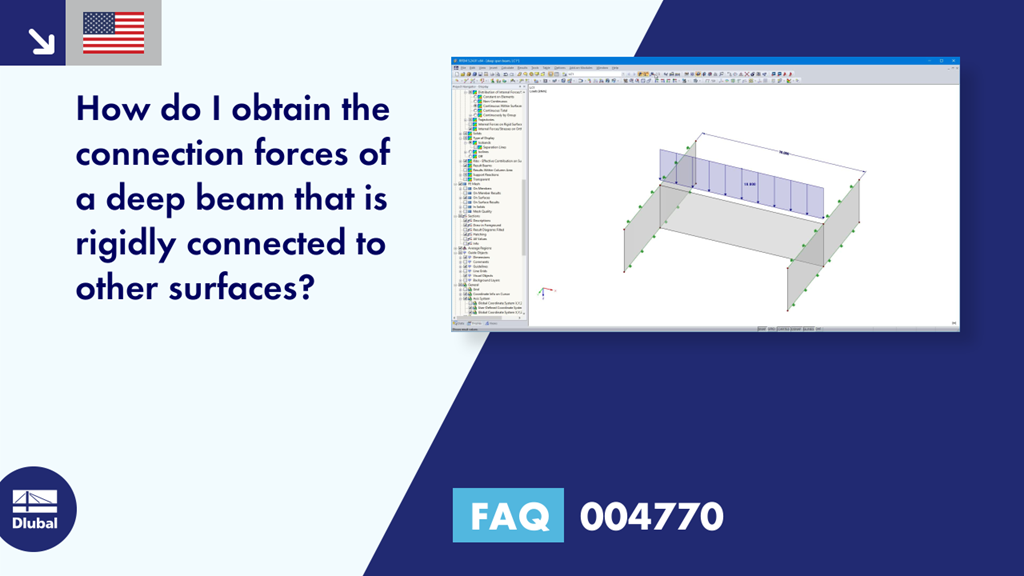Question:
How do I obtain the connection forces of a deep beam that is rigidly connected to other surfaces?
Answer:
In most cases, a resulting shear force or a shear force applied over the height is of interest, and not the actual surface distribution. There are two tools for displaying the forces. This is shown in the following example of a shear force. Furthermore, the procedure is shown in the video.
Evaluation by Section
By using a section, the distribution can be displayed graphically as a result diagram. To read out the shear force for the example shown in Figure 01, the shear flow n-xy is required. This result diagram can then be evaluated further in the result diagram, for example, to determine the resulting shear force. Furthermore, the resultant can also be displayed graphically. In order to neglect the influence of supports, we do not recommend creating the section directly on the ground line of the surface. Basically, the following applies: The finer the FE mesh, the more accurate the results.
Evaluation by Result Beam
Another option is to use a result beam that integrates the surface internal forces and displays them as member internal forces. If you are only interested in the internal forces, you can select any cross-section, because a result beam does not bring any further stiffness to the structural system. The advantage of the result beam is that the assigned cross-section can also be designed in the add-on modules.
